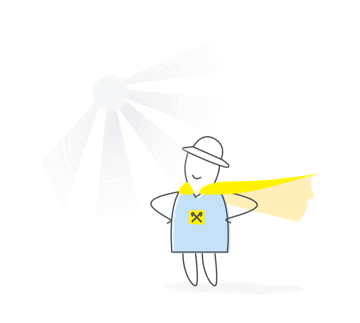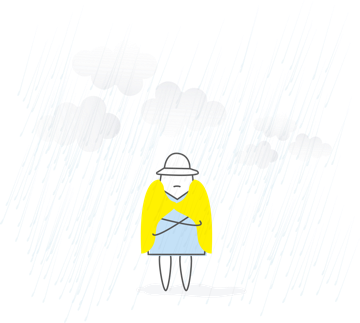Advertising, which certainly works
To start with, Yevhen Shevchenko founder of digital agency UAMASTER recommends thinking over your customer’s journey in details. We would like to briefly remind you that the customer journey means history of customer’s interactions with your product or service, which undergoes the following stages:
• Acquaintance of customer with the product or service.
• Interest to the product or service.
• Desire to buy the product.
• Action (successful transaction).
In each of these pit stops, there are many unobvious user’s steps that influence his purchase decision. And at each of these steps you have to be convincing enough. The first significant step that should not be missed at the initial stage: check the correctness of the specified address, phone number and working hours in all your online presence points: website, social media profiles, signature in e-mail, Google Maps, etc. This is an especially hot topic today, because due to the quarantine, many companies have been temporarily closed, changed office or work schedule. If your store is open from 9:00 to 19:00, but your site says “from 9:30 to 17:00” and Google Maps says “closed”, you can hardly expect a flow of potential customers in the evening. “If you have several offline outlets, specify the exact addresses, working hours, valid phone numbers for each of them,” said Shevchenko.
If you are going to advertise only one of the outlets, for example, in connection with the opening or holding of the campaign, Shevchenko recommends creating a separate landing page, which will link to the advertisement. Be sure to provide up-to-date information about the promotional offer or product/service, the address of the nearest outlet on the map with a close-up view, a valid phone number, working hours. Place other addresses of your outlets below.
Suppose you need to launch an advertising campaign about the appearance of a new autumn clothing collection in your chain of stores in different cities. Or to tell about a new offer in a coffee shop chain in different areas of one city. A real-life example: a retail chain of 18 clothing stores in 10 cities of Ukraine. The list of stores is sorted by city names. Following the ad link, the residents of Vinnytsia and Zhytomyr will see the address they need immediately. And visitors from Lutsk or Chernivtsi will have to look for their city and store address somewhere at the bottom of the page, which means that the entrepreneur may lose them. The correct scenario: to make not one big campaign, but separate advertising campaigns for each city or district of the city, show a banner with the nearest address, lead to a separate landing page of the site, where this address is listed first.
Many years of experience of the digital agency UAMASTER proves: for geo-dependent businesses, specifying the address in a banner or text ad increases the click-through rate of advertising by 20% in average.
Localize your website
When preparing content for the site, be sure to use location-based marketing. Search engines understand users’ requests with a specific geographical location: “beauty parlour on Khreshchatyk», “Pizza on Sumska Street”, “pharmacy on Deribasivska Street”, etc.
With a view to make your business be found by customers more often through search results for similar geo-requests, it is necessary to carry out the following site optimization operations:
● place data on the website: full address and phone number;
● place additional SEO-texts with your key requests with name of the district, micro district (it can be the reviews “Best restaurants of Pechersk”, recommendations “How to choose the private school in Irpin”, etc.);
● add the company to Google My Business;
● register the company in local registries and catalogues;
● add the company to online maps;
● optimize the website for voice search.
Use Maps with reviews
The first thing seen by the potential customer in the search results is the information from Maps. Usually the company can be easily and quickly found through the Maps services, and even the website address is found through Maps, especially if own website is poorly promoted and located at the bottom of search results.
Pay your attention to the completeness of the information on your profile in Maps (not only Google, but also OpenStreetMaps, Foursquare): name of company, description of activities, working schedule, high quality photos, website, phone number and reviews.
68% of Internet users read online product and seller reviews before making a purchase. 48% of users prefer to shop with companies with a rating above 4 out of five.
Use different methods to get customers’ reviews. For example, short push notifications to people who have visited you, asking them to leave a review. This method is well suited for beauty parlors, medical centers, cafes, all companies that provide services. You can also send SMS, messages in Viber or Email with a request to leave a review to customers after visiting your cafe or store. (The main thing is not to use all channels at the same time, Shevchenko warns.) You can stimulate leaving reviews not only online, but also at the point of sale. For example, for the review on Google Maps cafe “Khinkalna” in Poltava gives dessert, and tire fitting station “Garazh” (Kiev) gives 10% discount.
Local marketing analytics
In your Google My Business account, you can see how users have found your company – through a search engine or Google Maps. There is also information about the actions of the audience when visiting the site: inquiries on how to get there, phone numbers or watching of photos.
Shevchenko notes: “Carefully analyze the data of Google and Facebook advertising campaigns, compare them with the statistics of visits to your offline outlets and sales data. Collect statistics separately for each offline outlet.” Test different creatives and ad formats to determine the most effective promotion scenarios.















